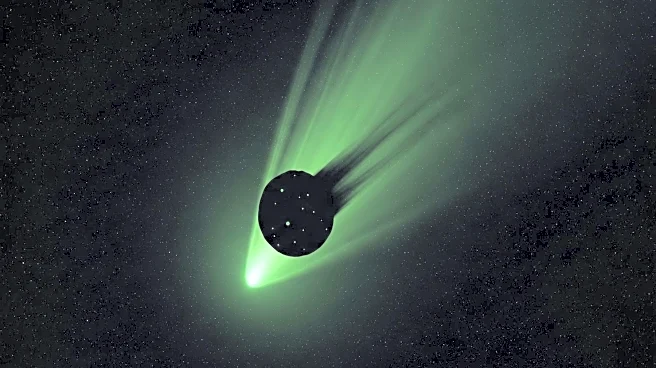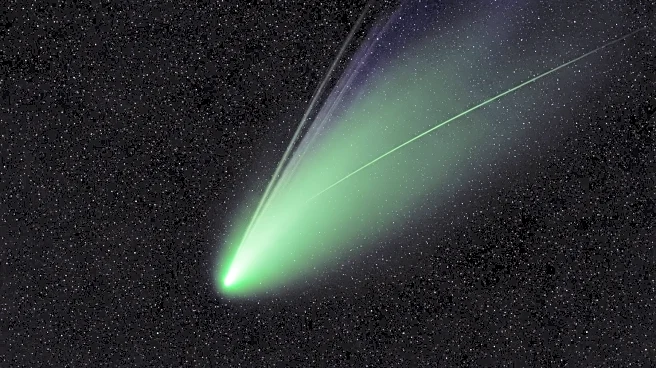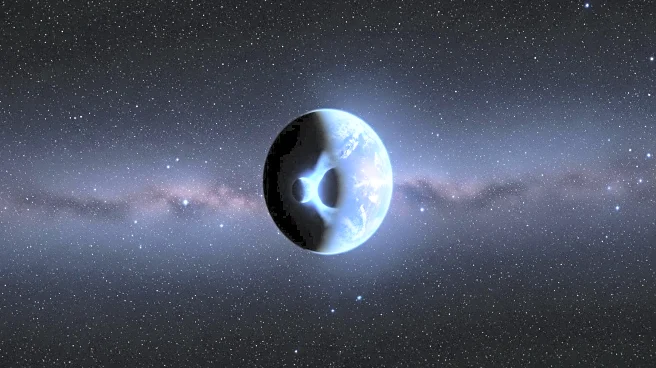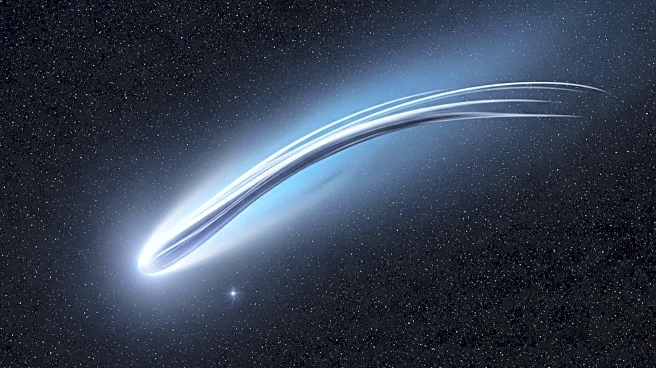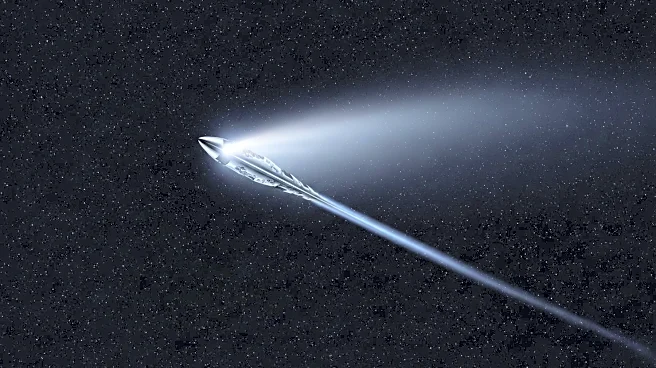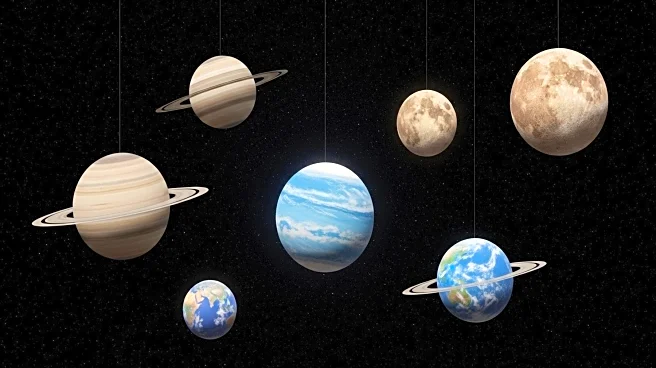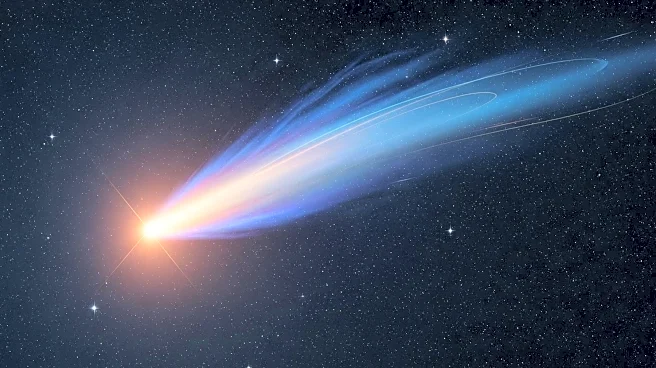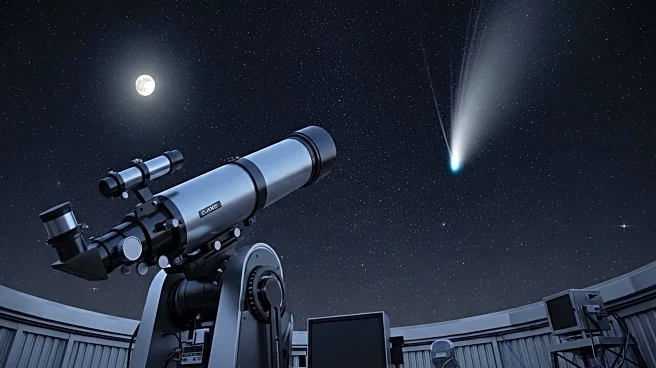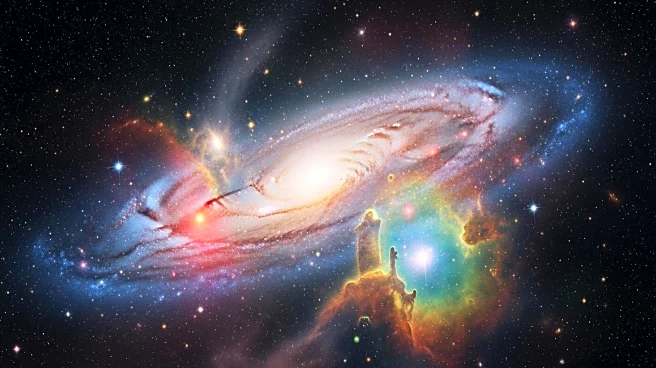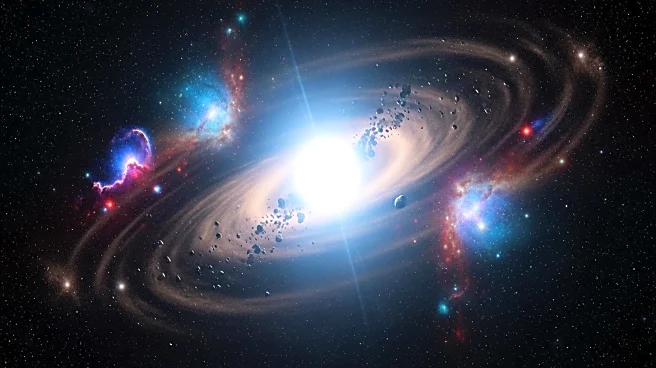What's Happening?
Interstellar comet 3I/ATLAS has been observed emitting a strange green glow, captured during a lunar eclipse on September 7, 2025. Typically, comets emit green due to dicarbon molecules, but 3I/ATLAS lacks these molecules, suggesting an unknown chemical process. Observations show the presence of carbon dioxide, nickel, and cyanogen, but these do not usually cause green fluorescence, leaving scientists puzzled about the comet's chemistry.
Why It's Important?
The unusual green glow of 3I/ATLAS challenges existing cometary chemistry models, indicating potential new discoveries in interstellar comet composition. Understanding the chemical processes of such comets can provide insights into the formation and evolution of celestial bodies, impacting theories about the solar system and beyond.
What's Next?
Scientists aim to gather more data as 3I/ATLAS approaches Earth in December. Further observations may reveal the molecule responsible for the green glow, helping to solve the mystery of the comet's unique chemistry. This could lead to advancements in understanding interstellar objects and their interactions with solar radiation.
Beyond the Headlines
The study of 3I/ATLAS may have broader implications for understanding the diversity of cometary compositions and the processes that govern their behavior. It could also inform future missions targeting interstellar objects, enhancing our knowledge of the universe's chemical diversity.

